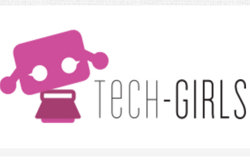DT Challenge - 7/8 Arduino - Sound
Let's make our own devices with the Arduino! We'll take a deep dive into building devices from the ground up, and you'll see how all pieces of technology are built! Learn how to create a temperature monitor, or a musical instrument, or make an automatic torch! Jump right in and let's make some noise!
To do the challenge offline use this guide to support students.
Additional details
| Year band(s) | 7-8 |
|---|---|
| Content type | Student challenges |
| Format | Interactive |
| Core and overarching concepts | Implementation (programming), Abstraction, Specification (decomposing problems), Algorithms |
| Australian Curriculum Digital Technologies code(s) |
AC9TDI8K03
Investigate how digital systems represent text, image and audio data using integers
AC9TDI8K04
Explain how and why digital systems represent integers in binary
AC9TDI8P04
Define and decompose real-world problems with design criteria and by creating user stories
AC9TDI8P09
Implement, modify and debug programs involving control structures and functions in a general-purpose programming language |
| Technologies & Programming Languages | Electronic programming boards |
| Keywords | Data: Collection, Representation, Interpretation, Specification, Algorithms, Implementation, Interactions, Arduino Australian Computing Academy, Arduino |
| Organisation | Australian Computing Academy |
| Copyright | University of Sydney. Creative Commons BY 4.0. |
Related resources
-

DT Challenge - 7/8 Javascript - Cookie Clicker
Learn JavaScript and Web programming to create a Cookie Clicker game!
-

DT Challenge - 7/8 Javascript - Space Invaders
Learn JavaScript and Web programming to create a Space Invaders game!
-

DT Challenge - 7/8 Python - Introduction to Microbit
Learn about the BBC micro:bit while creating your own virtual pet! Learn how to program a BBC micro:bit using the Grok micro:bit simulator. Use the MicroPython programming language to make a pet that you can feed and play with.
-

DT Challenge - 7/8 Python - Biology
Combine Biology and Digital Technologies to build an animal classifier!
-

DT Challenge - 7/8 Python - Biology Extension
Combine Biology and Digital Technologies to build an animal classifier!
-

DT Challenge - 7/8 Python - Networking with Micro:Bit
Program a micro:bit to create wireless networks and send messages around the room!
-

Tech girls: resources
This site offers a range of suitable programs and sites to support girls in computing.
